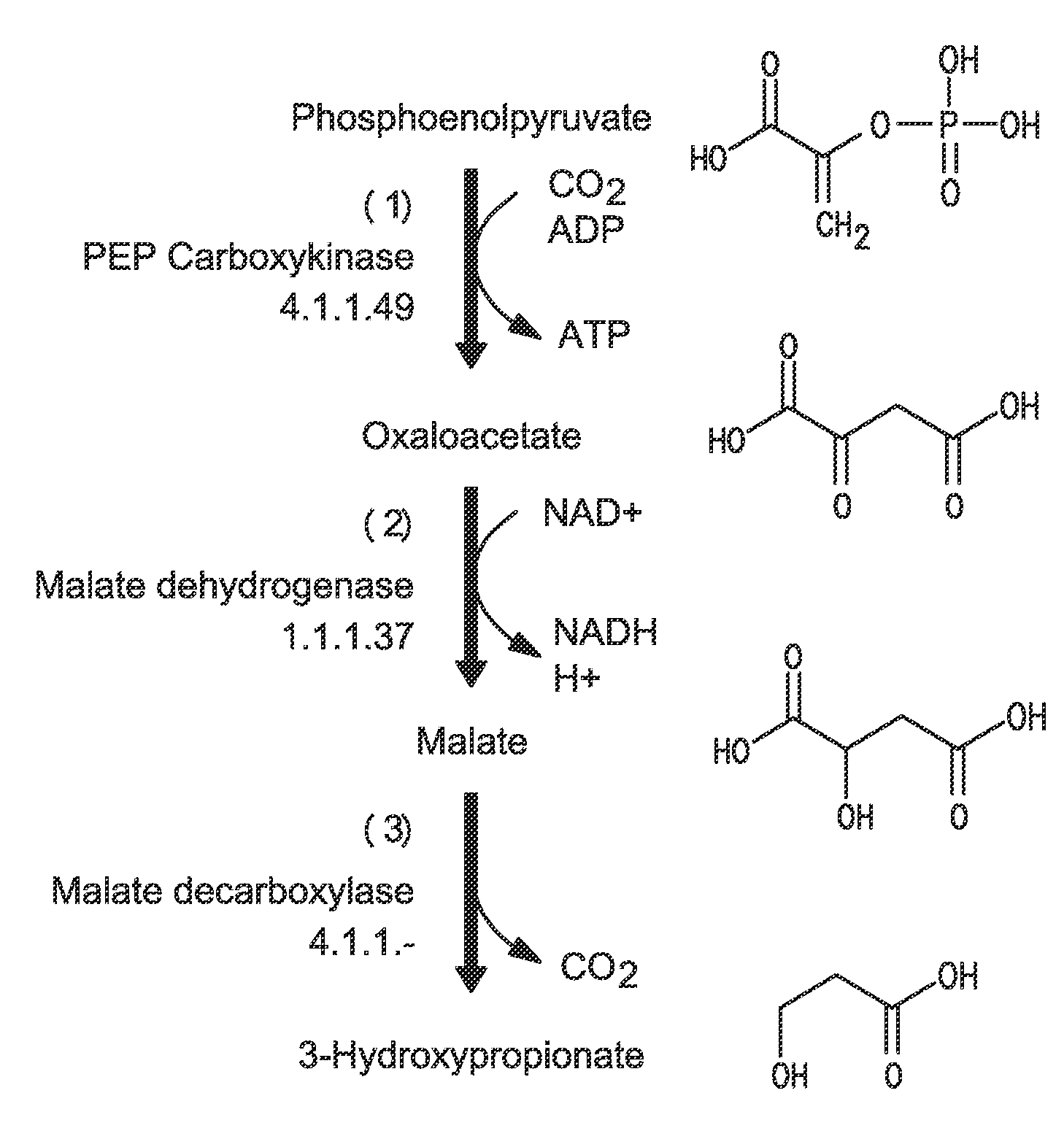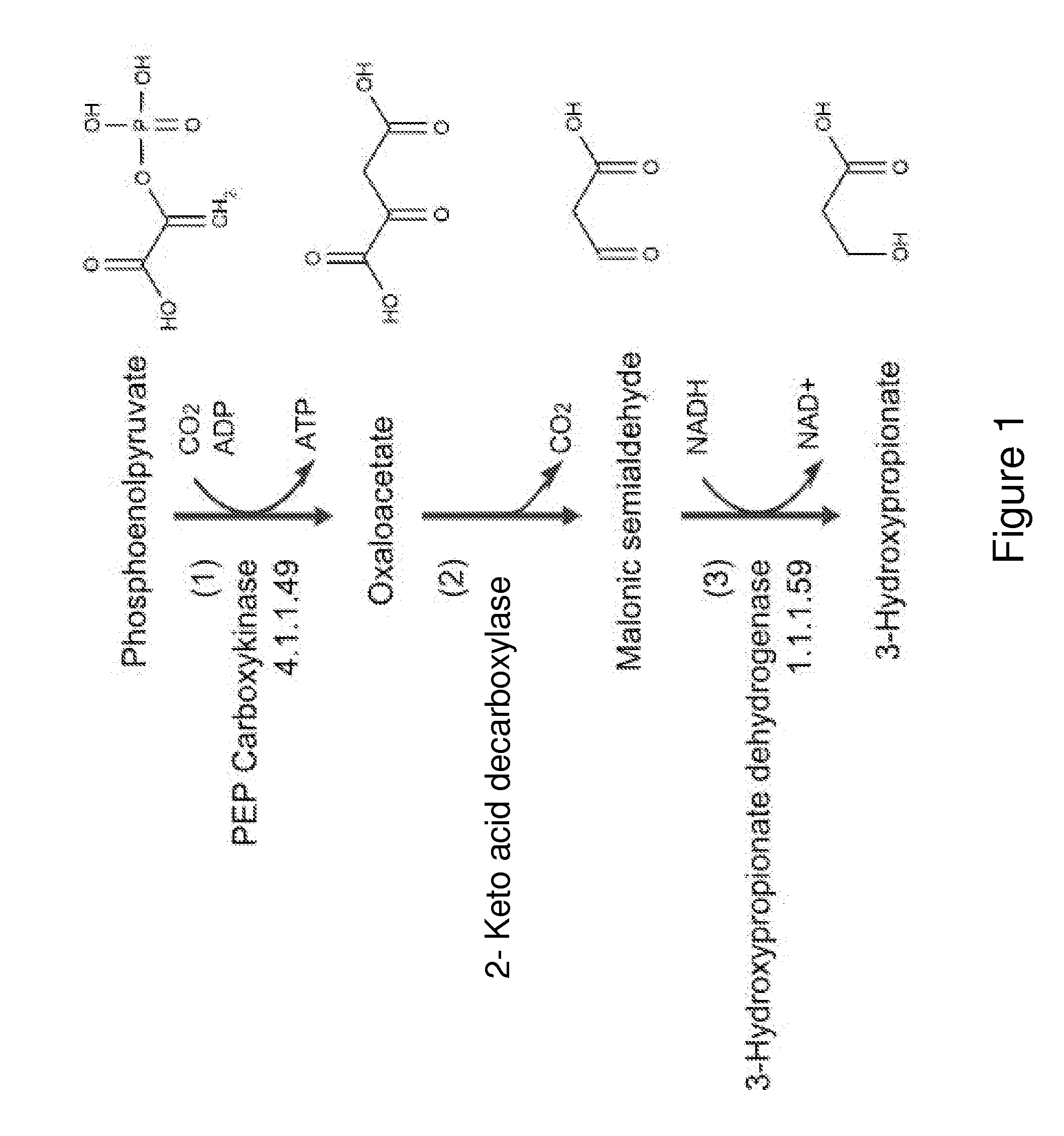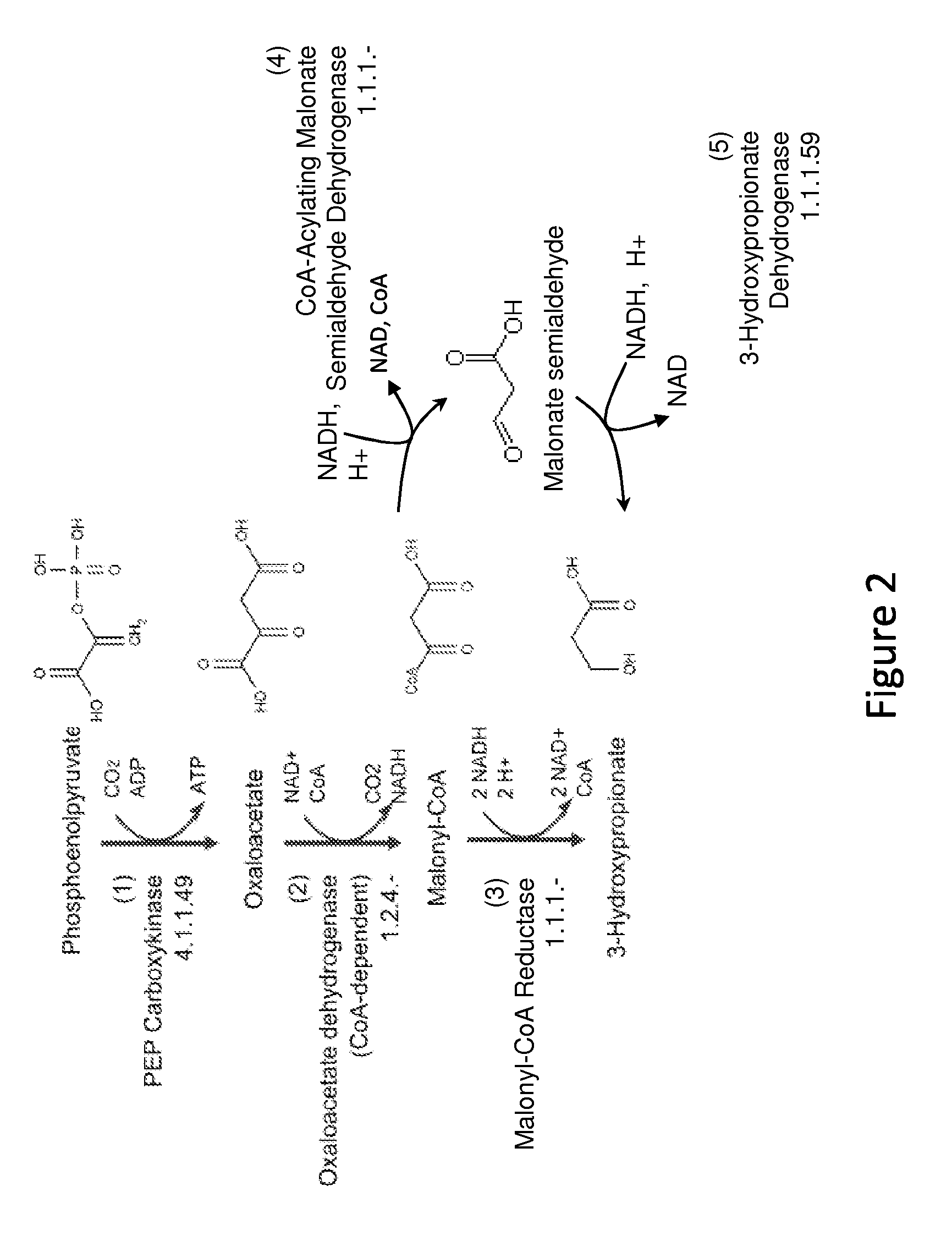Methods and organisms for production of 3-hydroxypropionic acid
a technology of 3-hydroxypropionic acid and biological process, applied in the field of commodity and specialty chemicals, can solve the problems of affecting the commercialization of 3-hydroxypropionic acid
- Summary
- Abstract
- Description
- Claims
- Application Information
AI Technical Summary
Problems solved by technology
Method used
Image
Examples
example i
3-HP Biosynthesis
[0160]This Example describes the generation of a microbial organism capable of producing 3-HP using a 2-keto acid decarboxylase metabolic pathway.
[0161]Escherichia coli is used as a target organism to engineer a 3-HP pathway, and testing growth and 3-HP production from glucose. E. coli provides a good model for developing a non-naturally occurring microorganism capable of producing 3-HP, from glucose since it is amenable to genetic manipulation and is known to be capable of producing various products, like ethanol, effectively under anaerobic conditions from glucose.
[0162]To generate an E. coli strain engineered to produce 3-HP, nucleic acids encoding proteins and enzymes required for the 3-HP production pathway via oxaloacetate decarboxylation as described above, are expressed in E. coli using well known molecular biology techniques (see, for example, Sambrook, supra, 2001; Ausubel supra, 1999; Roberts et al., supra, 1989). The mdlC gene (P20906.2), encoding a deca...
example ii
3-HP Biosynthesis via the Malonyl-CoA to 3-HP Pathway
[0164]This Example describes the generation of a microbial organism capable of producing 3-HP using a CoA-dependent oxaloacetate dehydrogenase metabolic pathway.
[0165]Escherichia coli is used as a target organism to engineer a 3-HP pathway, and testing growth and 3-HP production from glucose. E. coli is amenable to genetic manipulation and various products, like ethanol, have been produced effectively under anaerobic conditions from glucose.
[0166]To generate an E. coli strain engineered to produce 3-HP, nucleic acids encoding proteins and enzymes for the 3-HP production pathway via oxaloacetate dehydrogenation as described above, are expressed in E. coli using well known molecular biology techniques (see, for example, Sambrook, supra, 2001; Ausubel supra, 1999; Roberts et al., supra, 1989). In particular, the sucA (NP—415254.1), sucB (NP—415255.1), and lpd (NP—414658.1) genes encoding the CoA-dependent oxaloacetate dehydrogenase a...
PUM
| Property | Measurement | Unit |
|---|---|---|
| pKa | aaaaa | aaaaa |
| mass | aaaaa | aaaaa |
| of time | aaaaa | aaaaa |
Abstract
Description
Claims
Application Information
 Login to View More
Login to View More - R&D
- Intellectual Property
- Life Sciences
- Materials
- Tech Scout
- Unparalleled Data Quality
- Higher Quality Content
- 60% Fewer Hallucinations
Browse by: Latest US Patents, China's latest patents, Technical Efficacy Thesaurus, Application Domain, Technology Topic, Popular Technical Reports.
© 2025 PatSnap. All rights reserved.Legal|Privacy policy|Modern Slavery Act Transparency Statement|Sitemap|About US| Contact US: help@patsnap.com



